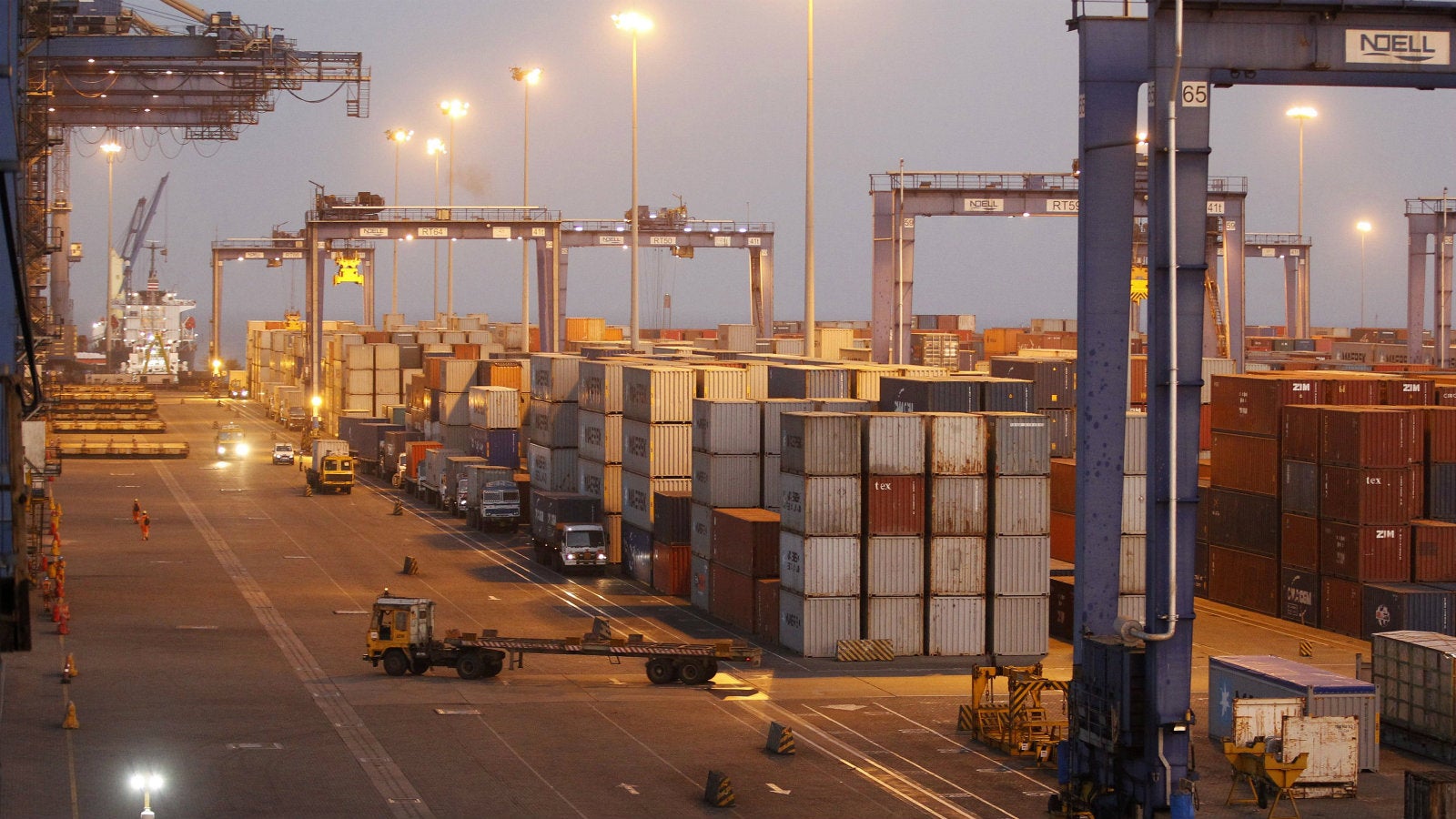India’s banking clean-up act is going to hurt its foreign trade
Importers are impaired, exporters are nervous, cost of credit could be on its way up, the rupee may weaken against the dollar, and investors are stunned. Stocks of public sector banks fell over 2 percent in early trade on Wednesday.


Importers are impaired, exporters are nervous, cost of credit could be on its way up, the rupee may weaken against the dollar, and investors are stunned. Stocks of public sector banks fell over 2 percent in early trade on Wednesday.
All because the Reserve Bank of India (RBI) decided on March 13 to bar banks from issuing letters of undertaking (LoU)—guarantees issued by Indian banks to foreign banks or branches, based on which the firms avail laons.
The RBI’s bolt from the blue comes a month after the revelation of the over $2 billion fraud allegedly perpetrated by jewellers Nirav Modi and Mehul Choksi at Punjab National Bank.
While the serious structural issues that the scam indicates at and the extent of the rot in India’s banking system are still not fully clear, this latest clean-up act by the banking regulator is likely to hit a crucial part of the economy: foreign trade, especially importers.
Banking expert Ashvin Parekh estimates that the LoU ban may last at least a quarter—or, alternatively, the RBI may never revive the instrument. That would mean importers will have to buy a lot more dollars to pay to overseas suppliers. This, in turn, may weaken the rupee significantly and put further pressure on importers. A weaker rupee will make imports costlier.
The RBI’s move could be especially disastrous at a time when Indian exporters are still limping back to growth. This is because many Indian exporters also import their inputs. Firms in the gems and jewellery, specialty chemicals, non-ferrous metals, and petroleum product sectors are some examples. The cost pressure will rise on such companies. The gems and jewellery sector, in particular, is already suffering due to the drying up of credit in wake of the PNB fraud. It alone accounts for 13% of India’s exports.
Nevertheless, if this is the end of LoUs, it could be perceived as bringing one aspect of India’s banking up to global standards. “These LoUs are cheap loans that firms get on the banks’ credit (worthiness), and not their own. It (banning LoUs) is a long-pending reform,” money market expert Anantha Narayanan told CNBC-TV18.
In which case, importers may have to adapt sooner than later.
“We will have to evaluate the cost of obtaining a letter of credit (LC) and bank guarantee as against LoUs,” Ajay Sahai, the director general of the Federation of Indian Exports (FIEO), told Quartz. Alternative forms of credit are likely to be costlier, although the impact will depend on individual borrowers’ credit records.
The misuse of LoU
The multiple banking frauds unearthed since the Modi-Choksi case have revealed several loopholes in India’s banking, which the RBI is now looking to plug.
“To my mind, it (RBI) is quarantining the system. The minute this (LoU) is curbed, all the pending transactions will have to be reconciled,” Parekh said.
The extent of use or misuse of LoUs is still not fully known. The state-run PNB has already increased the quantum of the fraud to over Rs13,000 crore from the Rs11,300 declared on Feb. 14. Modi and Choksi allegedly colluded with two bank employees and got themselves a steady supply of buyer’s credit for nearly seven years, which never reflected in the bank’s books.
Moreover, in recent years, loans taken abroad have been cheaper than those taken in India. As was alleged in the Rotomac case, promoter Vikram Kothari used these cheap foreign loans for purposes other than what they were meant for, i.e., importing goods.
Anyway, global banks prefer letters of credit (LC) to LoUs. The RBI, too, has kept the LC option open.
Design flaw
The LC is issued by a domestic bank in favour of a foreign supplier. So there are four parties involved in this—the importer, the exporter, and their respective banks. The details of the purchase, date of issue, expiry date, and other related information are available and can be tracked.
LoUs involve only movement of money from the importer’s bank to the foreign bank or branch.
A firm is eligible for LoU once it has made a deposit with a domestic bank. That deposit earns a certain amount of interest, and it allows the borrower to get dollar loans abroad, say, for a year, which the borrower can use to invest or rotate. At the end of the year, the borrower can convert the dollars to Indian rupees and repay the Indian bank—quick bucks made without having imported anything.
If the RBI finds the misuse to be rampant, it may never bring back the LoU. India’s thousands of importers will pay the price for the dishonesty of a handful of borrowers.